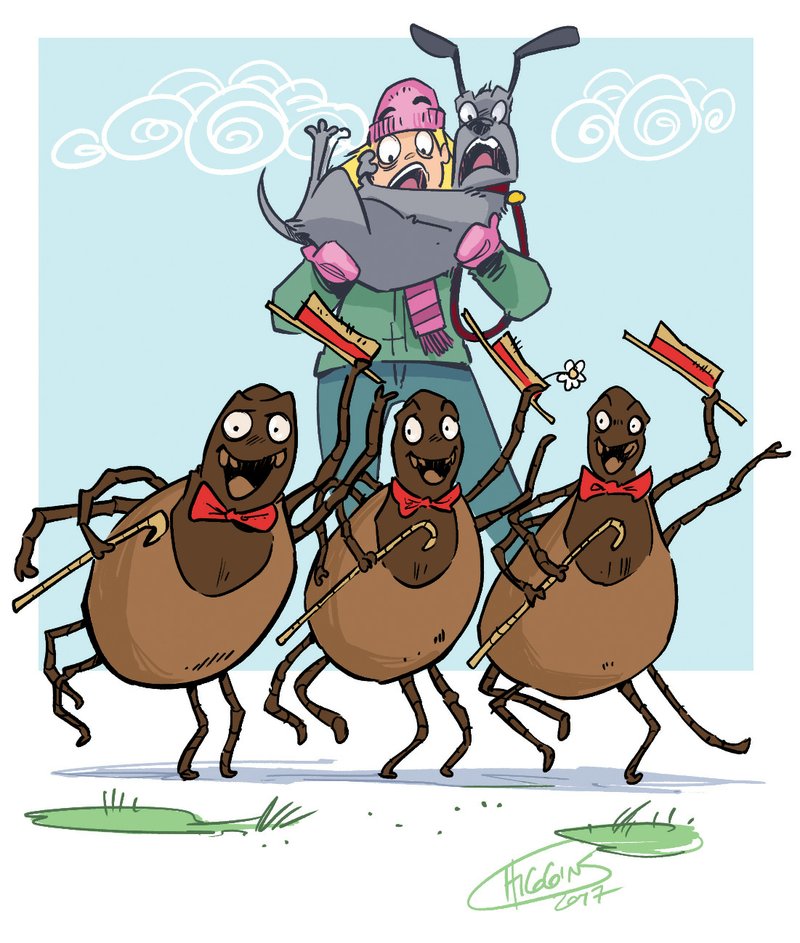I've found a couple of ticks this year -- one on me and one on my dog. I found the first tick on me in early March. Does the fact that we had almost no winter mean we'll be seeing more ticks this year?
Tick sightings in Arkansas began in February this year, but you'll be relieved to know that their appearance only seems premature and that it's not a harbinger of bloodsucking hordes to come.
Entomologist Kelly Loftin of the University of Arkansas System Division of Agriculture says he and his insect-watching colleagues spied ticks "fairly routinely" during February. Not to worry, however.
"With ticks, just because we're seeing an earlier occurrence doesn't necessarily mean they'll be any more numerous than in any previous year," Loftin says. "What's going to affect the numbers, especially on a local level, is the availability of habitat and hosts for the ticks."
Areas with an abundance of ground cover, leafy matter and thick shrubs or brush are prime areas for ticks as well as refuge for the wild animals that act as hosts and transport ticks from lawn to lawn, acre to acre, farm to farm. In Arkansas, the most prevalent ticks are the lone star tick, brown dog tick and American dog tick. For photos to help you identify each of these, go to the Arkansas Department of Health website at tinyurl.com/l8vmxsk.
Besides being creepy and gross, ticks are vectors for disease, in particular Rocky Mountain spotted fever and ehrlichiosis, which are carried by the lone star and American dog tick. Lyme disease, which is spread by the blacklegged tick, typically hasn't been a problem in Arkansas, but the health department recently reported that two cases had been identified in the state.
Loftin suggests that pet owners concerned about ticks attaching themselves to their pets or themselves take steps to decrease the availability of habitat for ticks on their property. Begin by clearing tall grasses and brush from around the house and the edge of the lawn.
A UA Extension publication, "Tick-Borne Diseases in Arkansas," co-authored by Loftin, offers tips for keeping your homeplace tick-free:
• Place a 3-foot-wide barrier of wood chips between lawns and wooded areas as well as around playground areas and patios. That will help to reduce tick migration into the rest of the yard.
• Mow grass frequently and keep leaves raked. Also, don't let leaves pile up at the edge of fences.
• Stack firewood neatly and in a dry area.
• Remove any old furniture, mattresses or trash from the yard.
• Keep playground equipment away from the yard edges; instead, put it in a sunny location. Also, if you're building a deck or patio, place them away from wooded areas.
• Treat the yard with an insecticide that targets ticks, taking care to follow all instructions and safety precautions.
These precautions also make a yard less likely to attract wild rodents -- squirrels, rabbits, rats -- that carry ticks, Loftin says.
Loftin suggests that pet owners use a tick-control product on pets that will be spending any time outdoors and may wander into areas beyond your property boundaries, pick up a tick and bring it home.
While there are no products that promise to prevent ticks from getting on an animal, there are several that kill ticks when they bite. Among them are topical treatments made by Frontline, Advantix and NexGard. Insecticide-treated collars can help repel ticks, but only in the head and neck area of the pet. When buying any insect preventive, read the label carefully to ensure that you get one suitable -- and safe -- for your pet in terms of species, age and weight. Keep in mind that using a product meant for dogs on a cat can be fatal.
Since nothing is 100 percent effective, pet owners should regularly do tick searches on their pets. While ticks can latch on anywhere, pay particular attention to their ears, belly, between the toes, and the folds of skin between the legs and torso.
If you find a tick, remove it immediately because the longer a tick stays on the animal, the greater the risk of infection. Use fine-tipped tweezers to grasp the tick's body, then pull slowly with even pressure. Clean the area with alcohol after the tick is removed.
Next week: A look at other pests that affect pets during warm weather.
Family on 04/12/2017

